You know the saying: “I feel like a million bucks”? Well, have you ever wondered just exactly how much money you’re wearing right now? I have, because I love knowing weird little factoids like that. I also love compulsively tracking (and crunching) irrelevant data. Yep, time for another wardrobe analytics post.
There are several ways to approach the question of how much money your outfit cost. You can look at absolute numbers (i.e. tally up the purchase price of everything you’re wearing), or you can look at your collective Cost-per-Wear. I think the latter is a better indicator of how much you’re maximizing your wardrobe, but number-crunching fun can be had with both values. Speaking of which …
For this exercise, I picked two of my favourite outfits from last month. I felt pretty good – at least six figures’ worth – in both. To keep things fair, I chose two pants outfits (though one is casual, and the other dressy), each consisting of a roughly equal number of pieces (5 and 4, respectively), all of which were purchased in the last year. (That last bit matters when calculating Cost-per-Wear.)
Here are the two outfits:
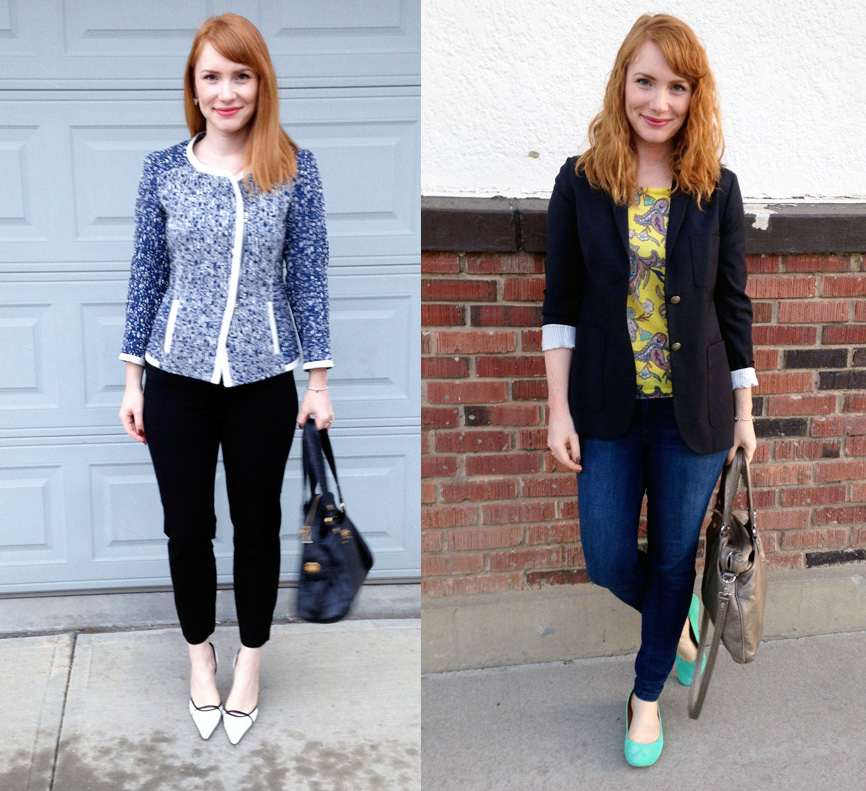
Now, do you think you can answer these questions: Which was the more expensive outfit? Which was the most expensive item in each outfit? Which outfit was the better deal? (Here’s a hint: one of these outfits cost approximately $1,540 in retail prices.)
Most Expensive Outfit: Absolute $ versus Cost-Per-Wear
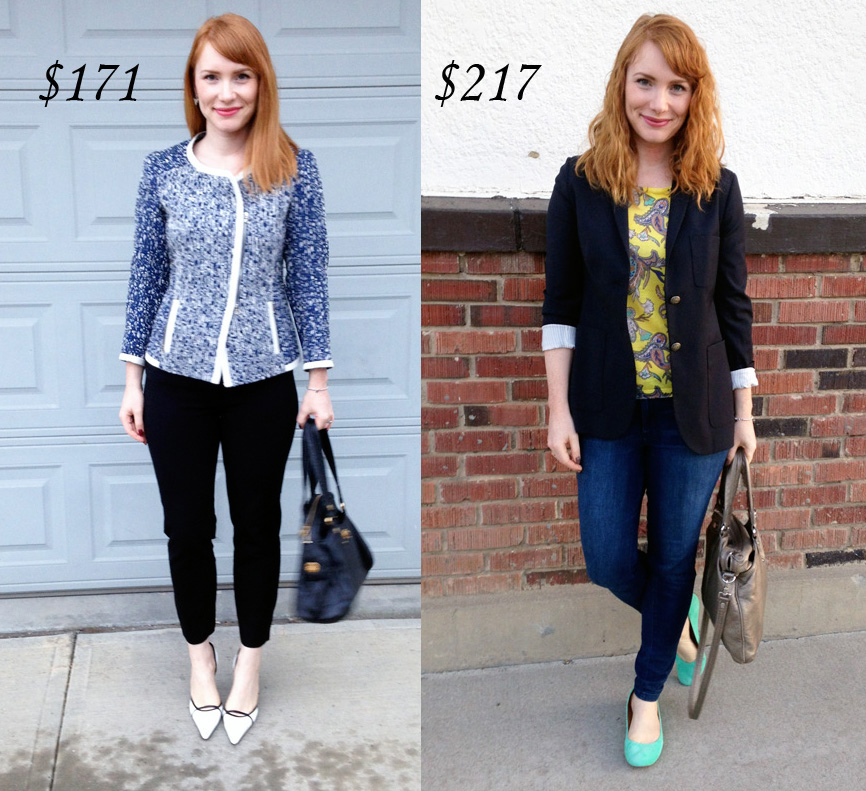
First of all, I think these numbers are pretty reasonable given the (a) function (work outfits); and (b) overall quality. If you remove the cost of the bags from the equation, the amounts go down to $66 and $127 respectively; we all know that I love expensive bags, so this is no surprise. I’m fairly cheap thrifty when it comes to most other clothing categories, and I think this analysis bears that out.
In absolute terms, the outfits are actually pretty equal if you factor in the item difference. On a per-item basis, the outfit on the left cost $42.75, versus $43.40 for the outfit on the right. (Or $16.50 and $25.40, if you factor out the bags.) It’s a similar story if you look at it on a Cost-per-Wear basis.
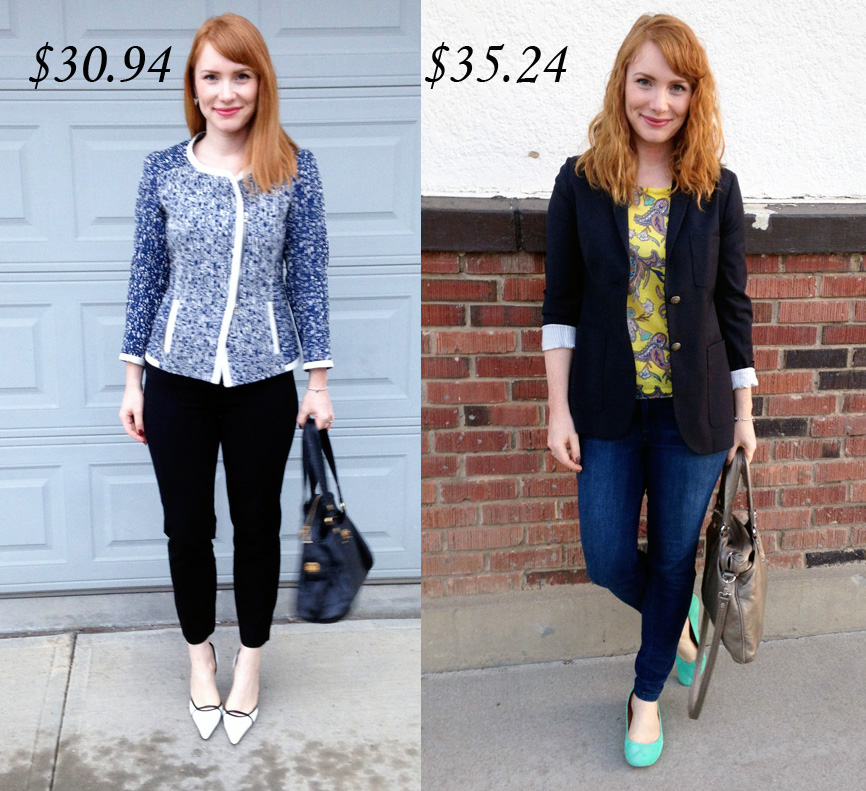
In the outfit on the left, the average Cost-per-Wear per item was $7.73; for the outfit on the right, the average Cost-per-wear per item was $7.05. Interestingly, removing the cost of the bags doesn’t make much difference: $7.31 and $6.10, respectively. That’s because I wear most of my bags on a regular basis (and these are two of my most worn), so their actual Cost-per-Wear is very low.
Overall, the Cost-per-Wear is still pretty high, but keep in mind that most of these items are fairly new.
Most Expensive Item: Absolute $ versus Cost-Per-Wear
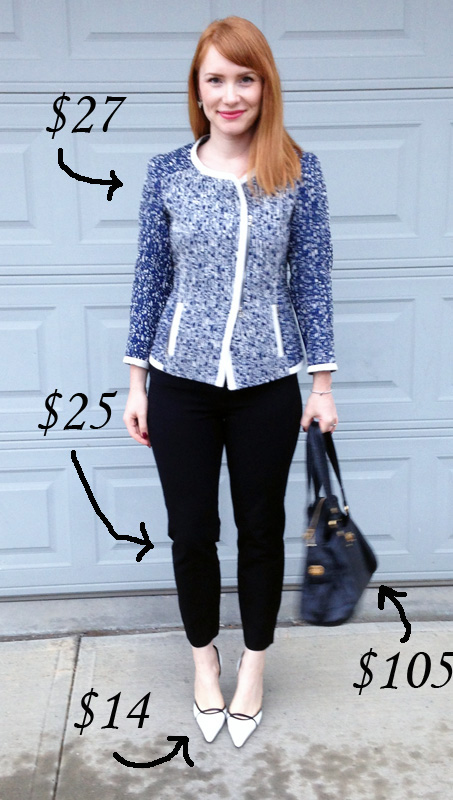
Here is where things get funny. In outfit #1, the cheapest item (my thrifted Manolos) actually have the highest Cost-per-Wear of the lot; I’ve worn them once – so far! – so it’s a whopping $14. The most expensive item (my MbMJ bag) actually has the lowest Cost-per-Wear ($1.69), because I’ve used it a lot. So, which is the most expensive item? You could argue it’s the shoes … for now.
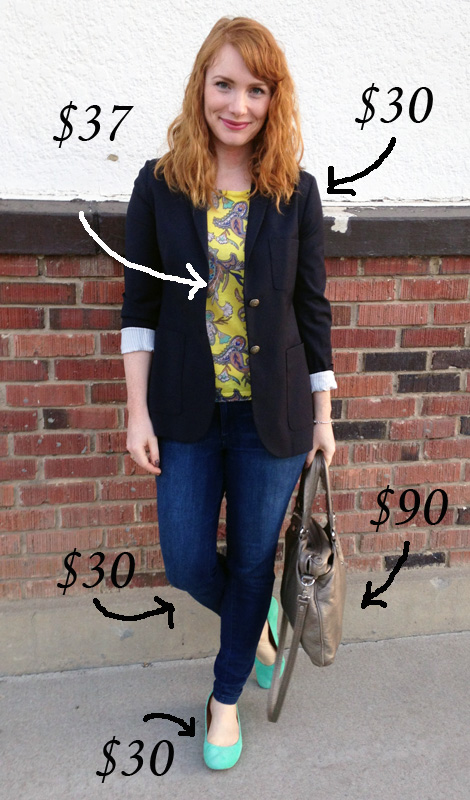
Outfit #2 speaks to a different contest: staple piece versus statement item. Not surprisingly, the staple piece (skinny jeans) has the lowest Cost-per-Wear ($0.67). I wear them at least once a week, every week. Usually, more like two (or three or four, if I’m in SAHM mode). My LOFT top, which I adore, currently has a Cost-per-Wear of $12.33, because it’s a work top I’ve only just started wearing, and can only wear every so often. It will take 55 wears before the Cost-per-Wear is the same as that of my jeans; needless to say, it will take me a lot longer to wear that top 55 times (if it even lasts that long) than the jeans. Lesson learned? It doesn’t make sense to spend more money on statement pieces than on staples, because the Cost-per-Wear just doesn’t justify it. Still, the heart wants what it wants, math be damned.
Best Deal
So, which outfit was the better deal? How about one last metric: retail cost versus actual purchase price. I think this is the least meaningful number, because retail values are more or less arbitrary numbers plucked from thin air (and marketing hype) by retailers … but let’s go with it anyway. I’m a bargain shopper, and this sort of calculation always makes me giddy. I mentioned earlier that one of these outfits would have cost approximately $1,540 at retail. The other one, approximately $750. You can probably guess which is which by now, so I’ll knock off the drum roll; the outfit on the left was the more “expensive”, and the better deal – I paid only 11% of the retail cost (compared to 29% in the second case). Both outfits comprised items bought at retail and secondhand, so the difference doesn’t necessarily come down to source – just luck.
